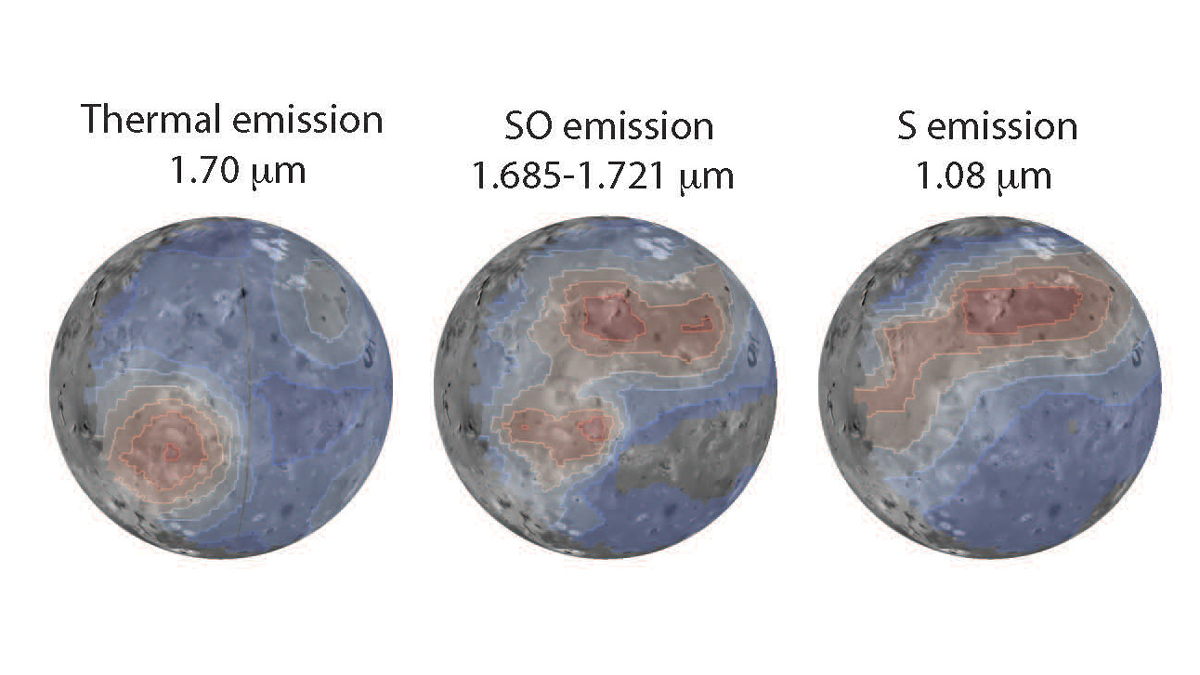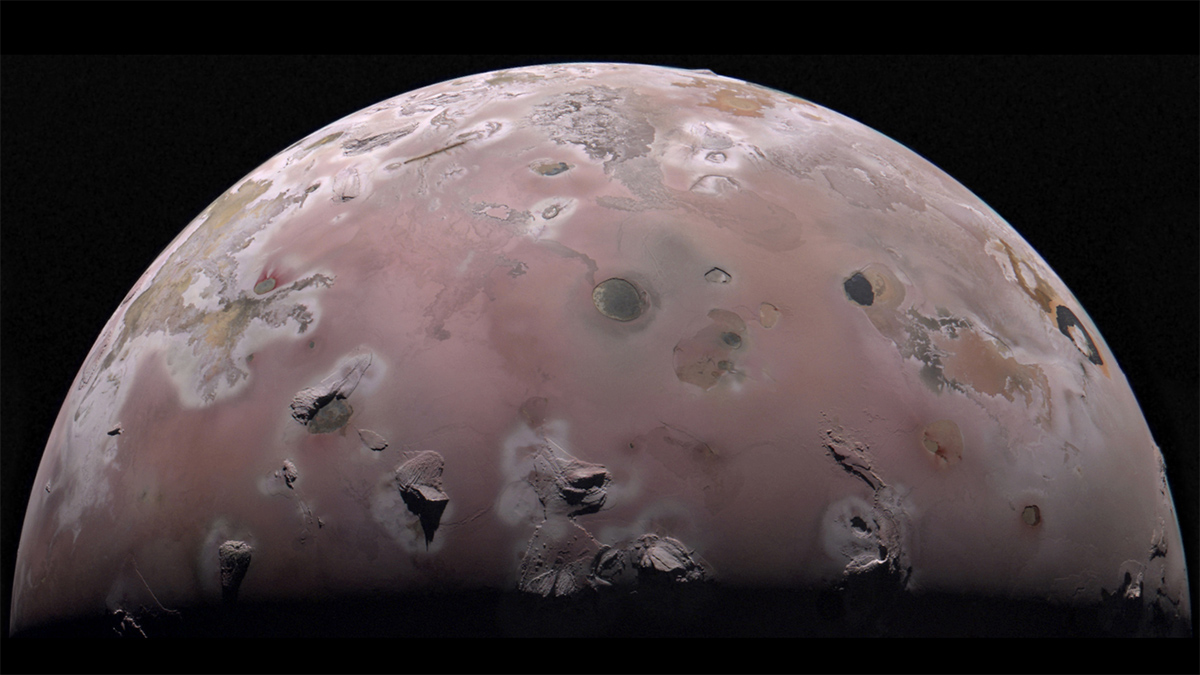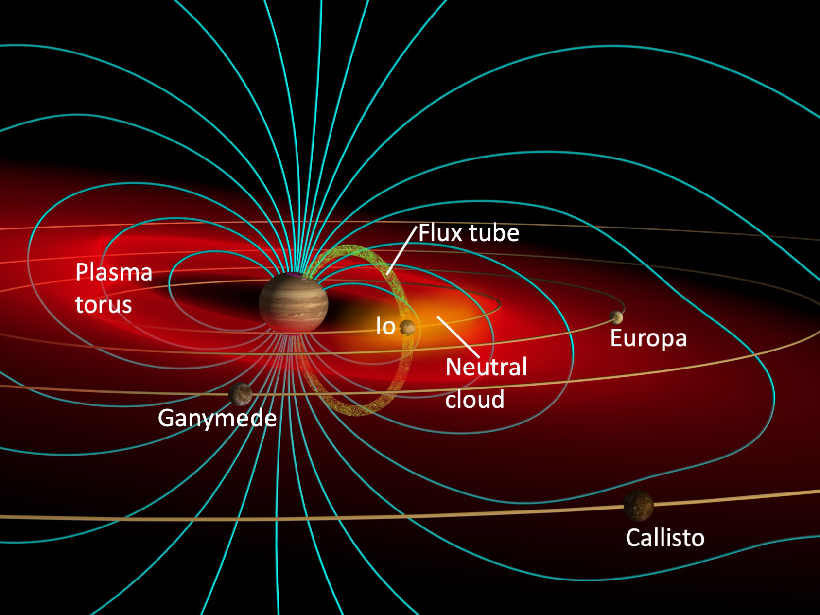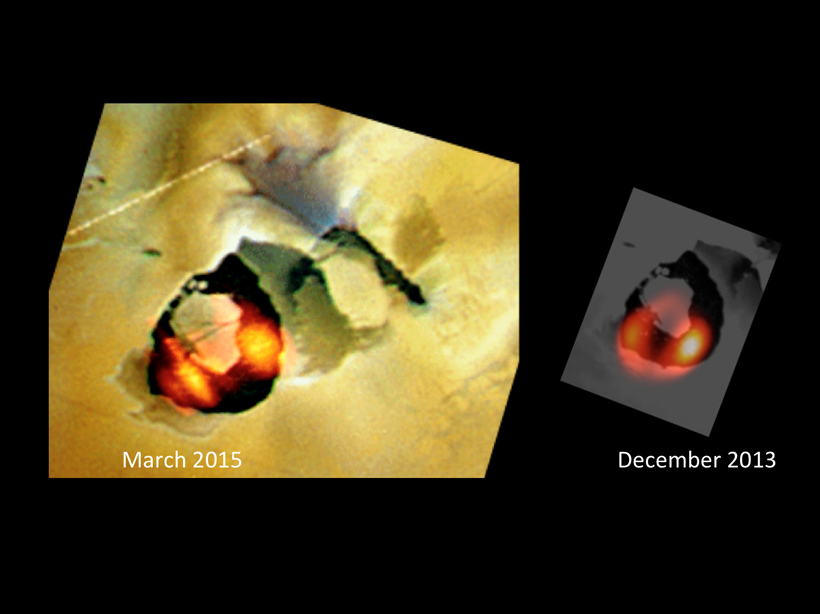New James Webb Space Telescope images reveal cooling lava, volcanic sulfur monoxide gas, and sulfur gas emissions created by interactions between plasma and the moon’s atmosphere.
Io
Io Probably Doesn’t Have a Global Magma Ocean After All
Data from the Juno spacecraft may have answered a decades-old question about Jupiter’s moon.
Amateur Astronomer Finds a Possible Crater on Io
The most volcanically active body in the solar system may have an impact crater, a discovery spotted by a curious nonprofessional scientist.
Two Moons and a Magnetosphere
Decades of research have illuminated how Io and Europa shape—and are shaped by—Jupiter’s giant magnetosphere.
Does Io Have a Magma Ocean?
Future space missions will further our knowledge of tidal heating and orbital resonances, processes thought to create spectacular volcanism and oceans of magma or water on other worlds.
Jupiter’s Galilean Moons May Have Formed Slowly
A new model is the first to simultaneously explain many of the moons’ characteristics, including their mass, orbits, and icy composition
No Underground Magma Ocean on Jupiter’s Fiery Moon?
A new study suggests alternative explanations for Io’s unusual magnetic field.
The Oxygen Neutral Cloud Surrounding Jupiter’s Volcanic Moon
Japan’s Hisaki satellite takes measurements of faint oxygen emissions from Io.
Scientists Discover Stromboli-Like Eruption on Volcanic Moon
Jupiter’s moon Io is known for its lava fountains and roiling lava lakes, but scientists had never seen such an intense eruption in their data until now.
Jupiter's Europa Helps Earthlings See Sister Moon's Volcano
By briefly slipping between Earth and sister Jovian moon Io, Europa fortuitously enabled an Earth-based telescope to observe, with greater detail than ever before, a huge, puzzling volcano on Io.










